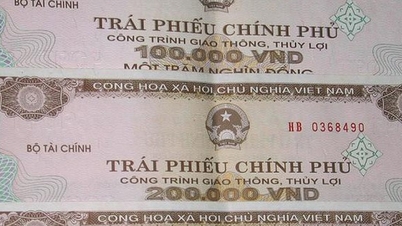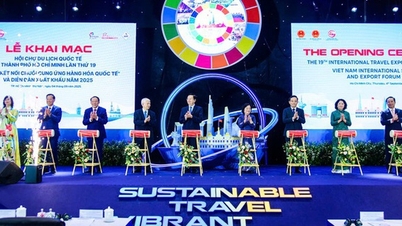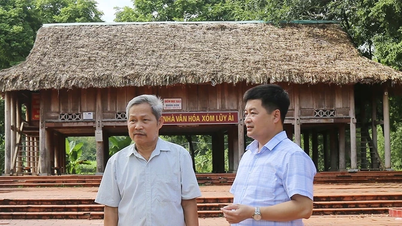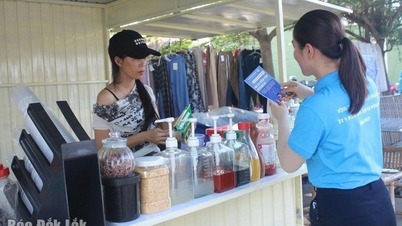
Re-planning of radio resources is of decisive significance, helping Vietnam proactively position itself in the global technology competition.
A representative of the Radio Frequency Department, Ministry of Science and Technology , said that in the context of 5G, 6G mobile information technology, LEO satellites, Wi-Fi 6E/7 and Internet of Things (IoT) are developing strongly, re-planning radio resources is of decisive significance, helping Vietnam proactively position itself in the global technology competition.
The new plan is based on a comprehensive update of international commitments following the World Radiocommunication Conference (WRC-23). Accordingly, 65 frequency bands have been adjusted, 23 new notes have been added, 77 notes have been amended and 1 note has been abolished. These changes ensure compatibility with the international frequency allocation system and pave the way for strategic technological steps.
Prioritize emerging technologies
Also according to the Radio Frequency Department, this planning especially prioritizes important frequency bands serving new technology, including:
The 3400–3560 MHz and 6425–7125 MHz bands are for IMT (5G/6G): Previously, the 3400–3560 MHz band was for Vinasat satellites, but now it is being redirected to mobile broadband, following the trend that European and Asian countries have applied. The 6425–7125 MHz band in particular has a very large capacity and is considered the “golden band” for 6G in the future. Early planning for IMT will create space for Vietnam to not be behind in the 6G revolution.
The 600 MHz band is planned for mobile after digital terrestrial television is discontinued: This is a low frequency band with long-range coverage, suitable for expanding 5G/6G coverage nationwide, especially in remote areas.
5925–6425 MHz band for Wi-Fi 6E/7: This is a global trend as many countries have opened the above band for ultra-high-speed Wi-Fi. This planning helps Vietnamese people and businesses enjoy new generation Wi-Fi infrastructure, serving broadband connection, promoting digital transformation in production and life.
The new planning also facilitates the strong development of satellite technology:
Ka band for geostationary satellites (new Vinasat), expanding capacity for satellite information services, in line with the strategy for space technology development until 2030.
Non-geostationary satellites (LEO/NGSO): For the first time, regulations have been added to the official planning, creating the premise for modern telecommunications infrastructure based on low-orbit satellite information technology; especially important when Vietnam has piloted systems such as Starlink.
Flexible in allocation and usage
Another notable new point of this Plan is the flexible adjustment of the 700/800/900 MHz frequency bands. Instead of “hardly regulating” the entire frequency band for public IMT mobile information as before, the new plan opens up the possibility of sharing and combining mobile information systems and other radio information systems.
This frequency spectrum planning is a step to realize Resolution 57-NQ/TW of the Politburo on developing digital infrastructure and mastering strategic technologies. Frequency resources – though invisible but limited – are now re-planned in a scientific, modern way, in accordance with international practices, becoming the foundation for large-capacity, high-speed digital infrastructure, serving digital transformation, developing the digital economy, digital society and ensuring national defense and security.
According to the Ministry of Science and Technology, Decision No. 37/2025/QD-TTg not only inherits Decision 71/2013/QD-TTg, but also marks a new stage of development. That is, Vietnam proactively manages radio frequency space - a strategic resource in the digital age - ready for technological leaps and affirms its position on the global digital map.
Hien Minh
Source: https://baochinhphu.vn/quy-hoach-lai-tai-nguyen-vo-tuyen-nen-tang-chien-luoc-cho-ha-tang-so-va-cong-nghe-tuong-lai-102251008113809668.htm


![[Photo] Prime Minister Pham Minh Chinh inspects and directs the work of overcoming the consequences of floods after the storm in Thai Nguyen](https://vphoto.vietnam.vn/thumb/1200x675/vietnam/resource/IMAGE/2025/10/08/1759930075451_dsc-9441-jpg.webp)


![[Photo] Prime Minister Pham Minh Chinh attends the World Congress of the International Federation of Freight Forwarders and Transport Associations - FIATA](https://vphoto.vietnam.vn/thumb/1200x675/vietnam/resource/IMAGE/2025/10/08/1759936077106_dsc-0434-jpg.webp)
























































































Comment (0)